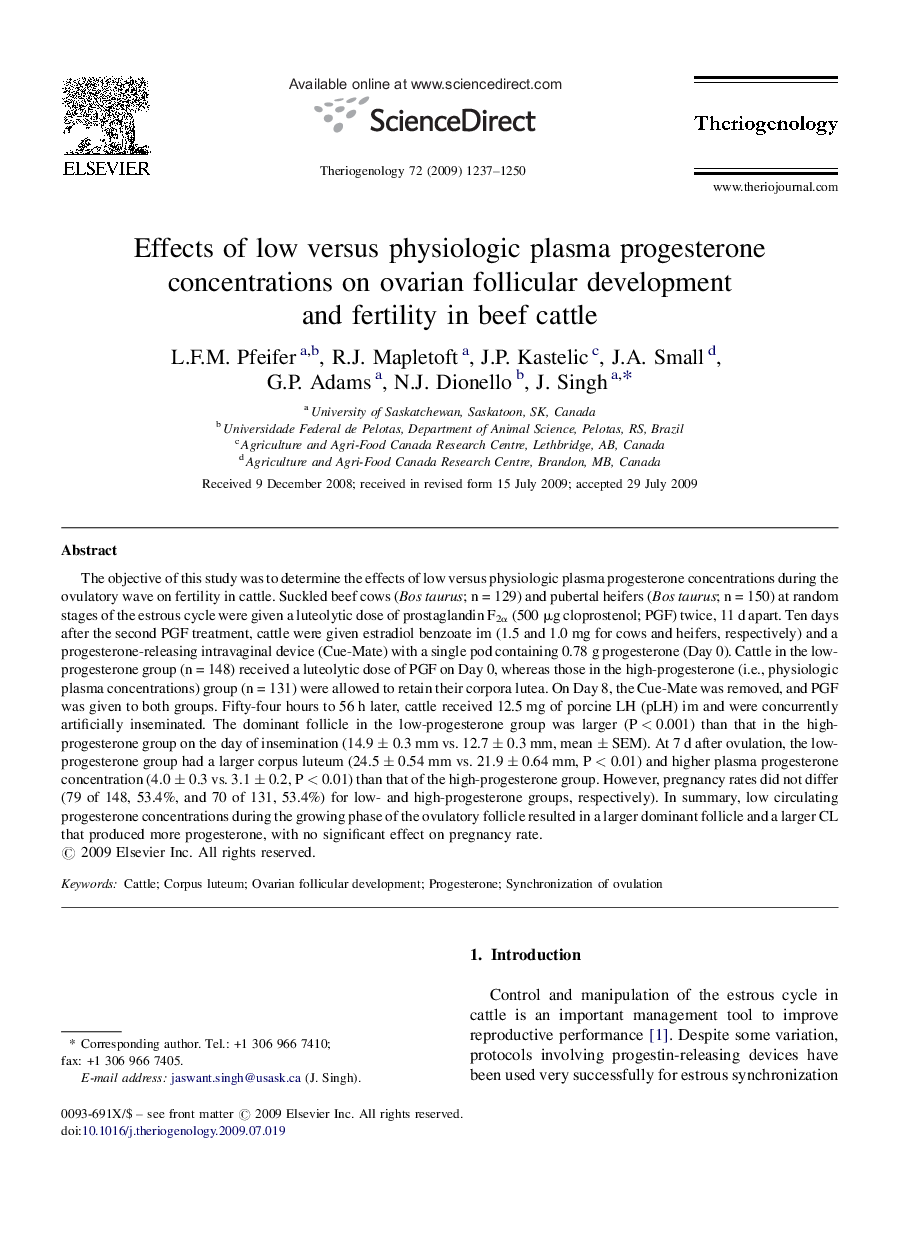| کد مقاله | کد نشریه | سال انتشار | مقاله انگلیسی | نسخه تمام متن |
|---|---|---|---|---|
| 2096582 | 1082172 | 2009 | 14 صفحه PDF | دانلود رایگان |

The objective of this study was to determine the effects of low versus physiologic plasma progesterone concentrations during the ovulatory wave on fertility in cattle. Suckled beef cows (Bos taurus; n = 129) and pubertal heifers (Bos taurus; n = 150) at random stages of the estrous cycle were given a luteolytic dose of prostaglandin F2α (500 μg cloprostenol; PGF) twice, 11 d apart. Ten days after the second PGF treatment, cattle were given estradiol benzoate im (1.5 and 1.0 mg for cows and heifers, respectively) and a progesterone-releasing intravaginal device (Cue-Mate) with a single pod containing 0.78 g progesterone (Day 0). Cattle in the low-progesterone group (n = 148) received a luteolytic dose of PGF on Day 0, whereas those in the high-progesterone (i.e., physiologic plasma concentrations) group (n = 131) were allowed to retain their corpora lutea. On Day 8, the Cue-Mate was removed, and PGF was given to both groups. Fifty-four hours to 56 h later, cattle received 12.5 mg of porcine LH (pLH) im and were concurrently artificially inseminated. The dominant follicle in the low-progesterone group was larger (P < 0.001) than that in the high-progesterone group on the day of insemination (14.9 ± 0.3 mm vs. 12.7 ± 0.3 mm, mean ± SEM). At 7 d after ovulation, the low-progesterone group had a larger corpus luteum (24.5 ± 0.54 mm vs. 21.9 ± 0.64 mm, P < 0.01) and higher plasma progesterone concentration (4.0 ± 0.3 vs. 3.1 ± 0.2, P < 0.01) than that of the high-progesterone group. However, pregnancy rates did not differ (79 of 148, 53.4%, and 70 of 131, 53.4%) for low- and high-progesterone groups, respectively). In summary, low circulating progesterone concentrations during the growing phase of the ovulatory follicle resulted in a larger dominant follicle and a larger CL that produced more progesterone, with no significant effect on pregnancy rate.
Journal: Theriogenology - Volume 72, Issue 9, December 2009, Pages 1237–1250